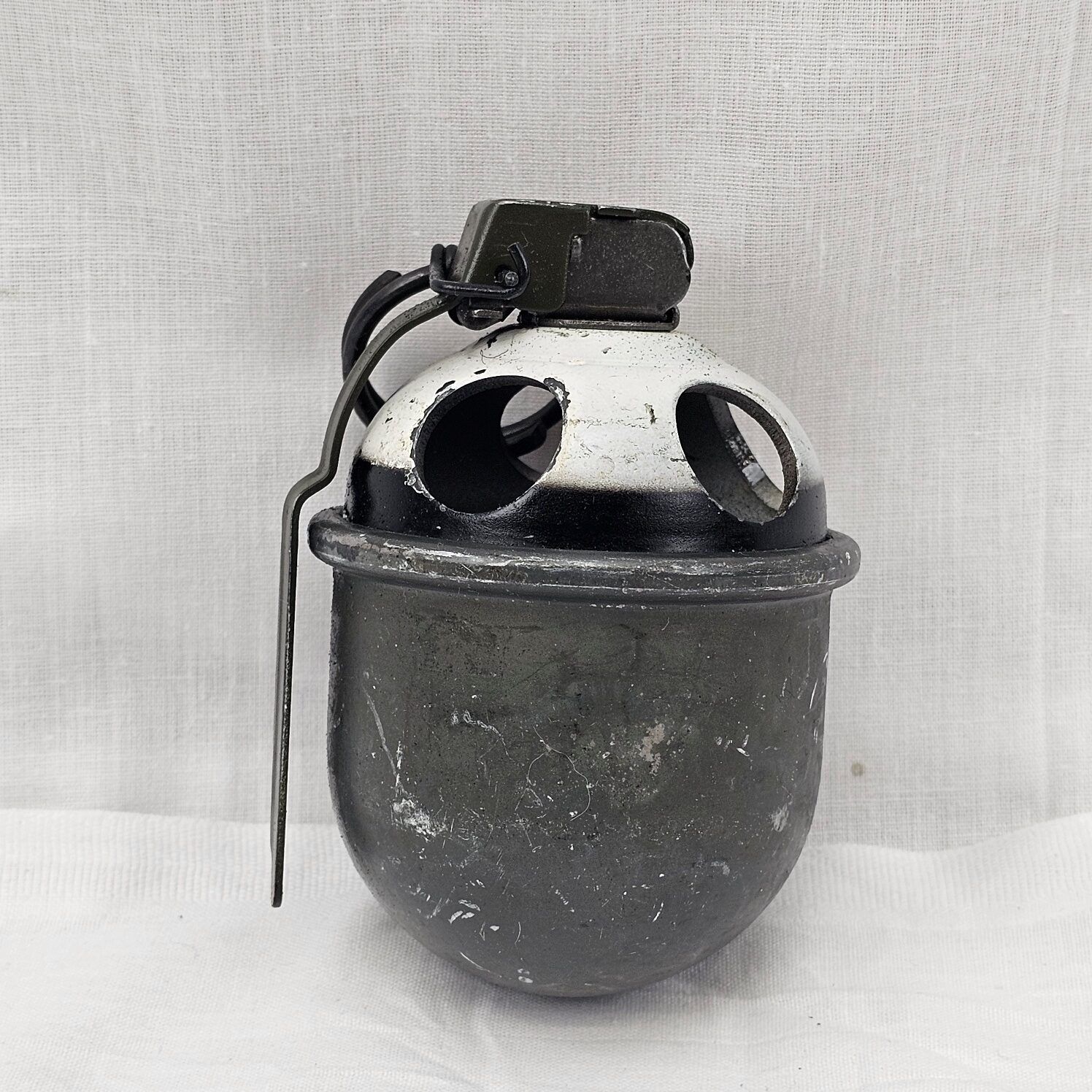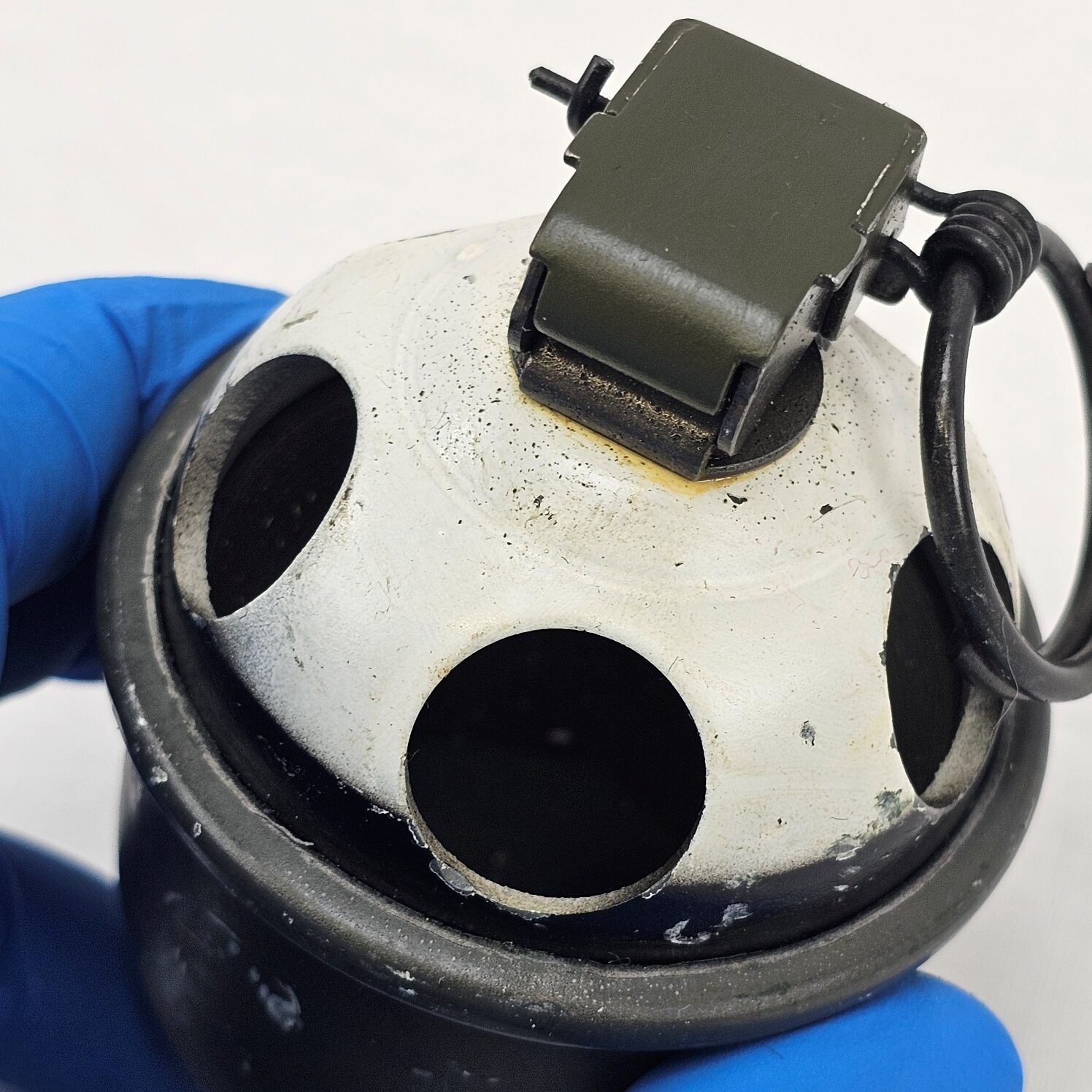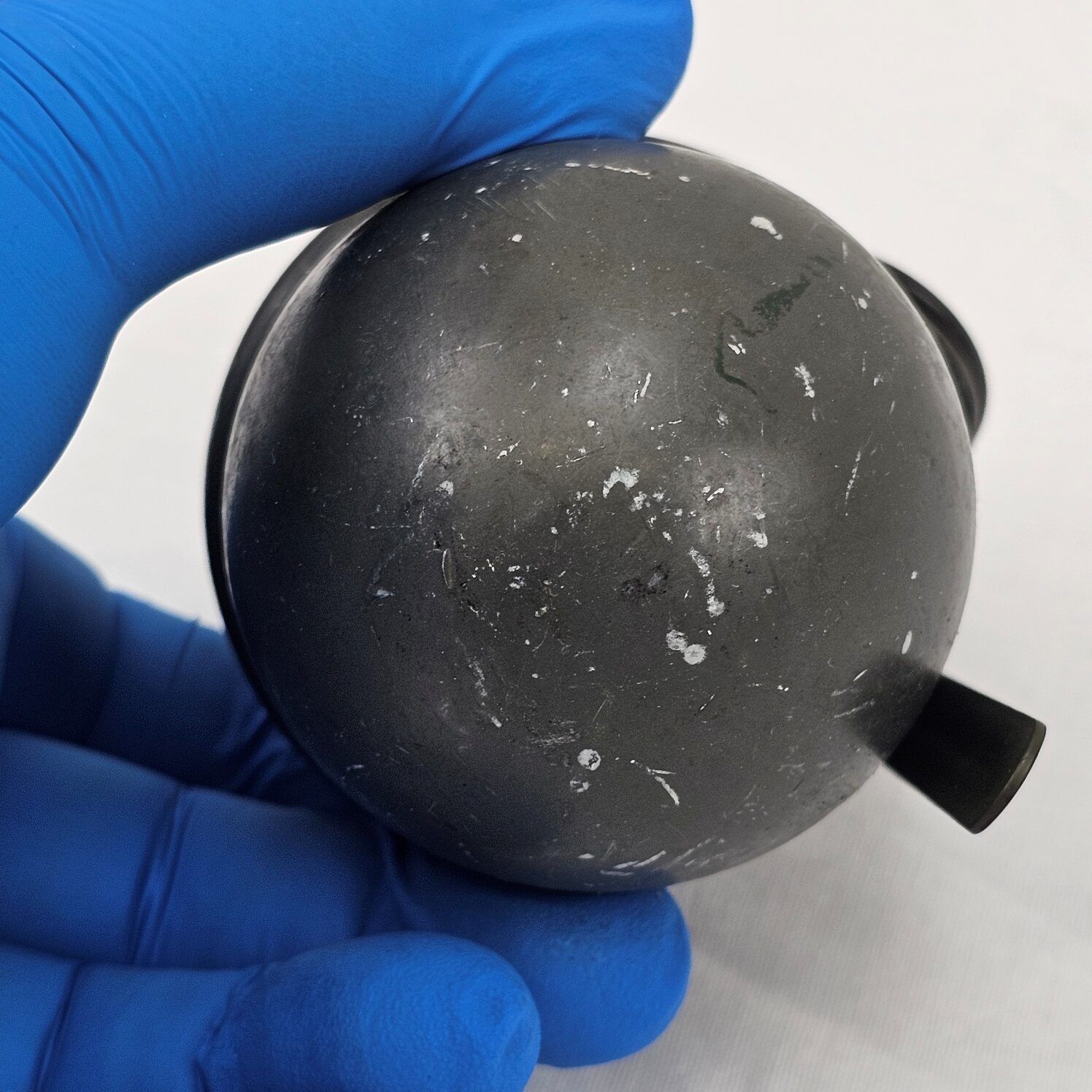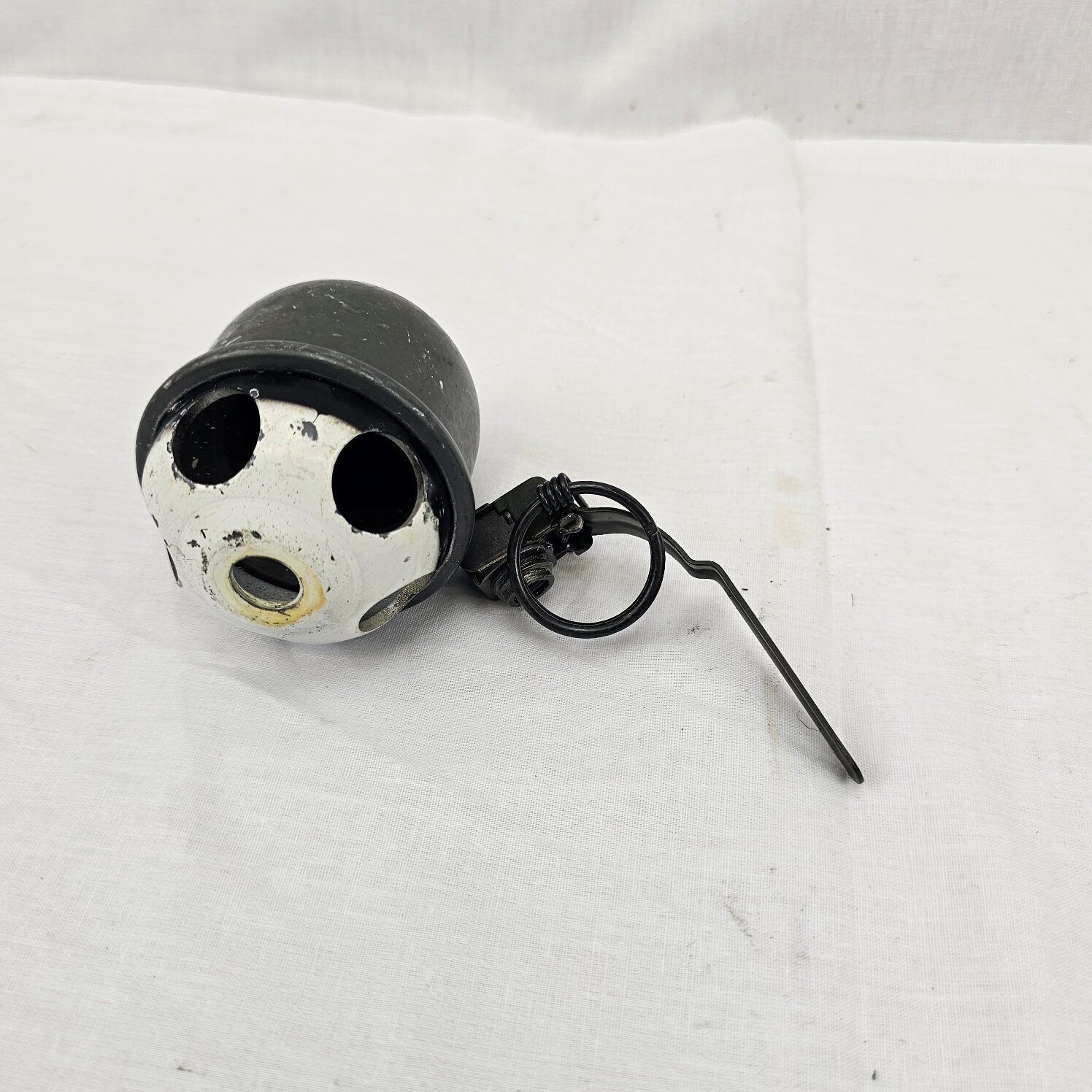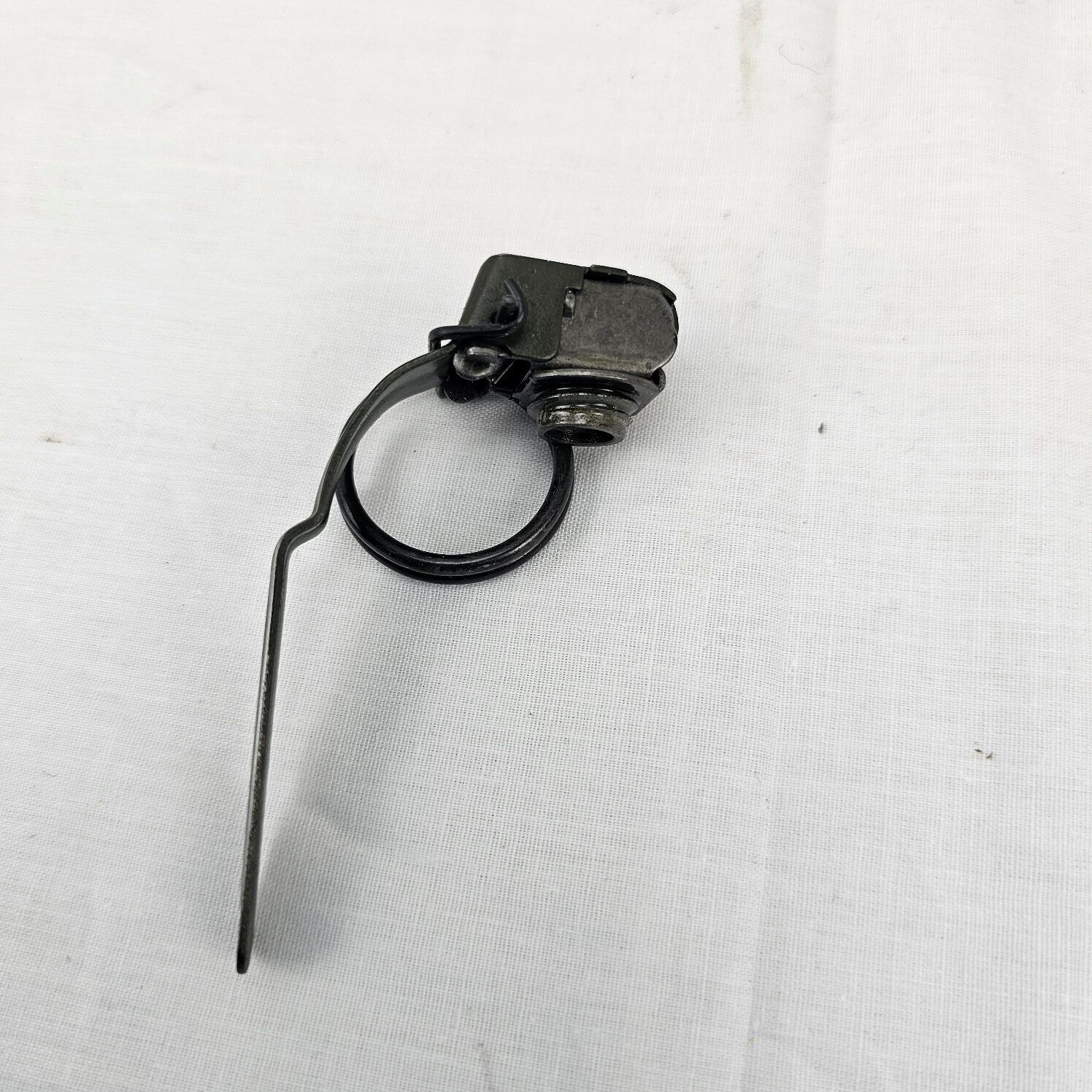~ Dutch Training Grenade #1 ~
The image shows a Dutch training grenade. This type of grenade is used for practice purposes to safely train soldiers in the handling, throwing, and operational procedures of live grenades without the risk of explosion. Here are some key details about Dutch training grenades:
Description and Features:
Appearance: The training grenade in the image has a distinctive design, featuring a metal body with multiple large holes on the top section. The top portion is painted white and black, which differentiates it from live grenades that typically do not have such color coding.
Body: The lower part of the grenade body is painted in a darker color, likely to mimic the weight and handling characteristics of a live grenade.
Fuze Assembly: The grenade is equipped with a fuze assembly and a safety pin, which are essential for simulating the actual use of a live grenade. However, the fuze in training grenades is usually inert or contains a small pyrotechnic charge to produce a noise without causing harm.
Purpose:
Training: These grenades are designed to provide realistic training for soldiers in grenade handling, ensuring they understand the procedures and safety measures needed when using live explosives.
Safety: By using training grenades, soldiers can practice without the risk associated with live ammunition, reducing the chances of accidents during training exercises.
Usage:
Handling: Soldiers practice pulling the safety pin, throwing the grenade, and taking cover, simulating combat conditions as closely as possible.
Simulation: Some training grenades may produce a small flash or sound to simulate the explosion, adding to the realism of the training scenario.
Identification:
Markings: Training grenades often have distinctive markings or colors to clearly identify them as inert. The white and black paint on the top part of this grenade is a clear indicator that it is for training purposes.
Historical and Modern Use:
Historical: Training grenades have been used by military forces worldwide since the early 20th century. The Dutch military, like many others, utilizes these devices to ensure that their troops are well-prepared for the use of live grenades.
Modern Training: Contemporary military training still relies heavily on such inert devices to provide safe, effective training environments for soldiers.


